Milky Way Astrophotography Course - TBA
Between January and April 2023, I will be running a few 121 Private Tuition Astrophotography Courses for various levels.
Depending on your level of experience this could be simple images of the stars both with and without foreground or star trails.
For the slightly more advanced we can add Milky Way photography planning, image stacking and editing skills. For even more experienced photographers I have a course on using star trackers like the Move Shoot Move or the Star Adventurer.
Ideally, for these courses, we need a night with little or no moon and clear skies. Obviously, I can’t guarantee the clear skies so these do tend to be short notice courses based on the clear outside forecast. If it still turned out we don’t get clear skies on the night then we’ll go through a complete dry run and use my test images for the editing. You can then practice at home and I’ll arrange a Zoom meeting to review your images and workflow.
This whole course can be run virtually over two or three zoom sessions. We did this during lockdown and it worked very well.
We’ve always run a Night Photography Course which includes low light photography and offers an introduction to photographing the stars.
These new courses build on that knowledge and go into more depth to get even better results. Previously we concentrated on single exposures images at as high ISOs but these can result in grainy images.
These two new courses look at more advanced techniques to reduce noise and enhance fainter details.
You can see some of my images here – https://www.flickr.com/photos/glentillyard/albums/72157713711287251

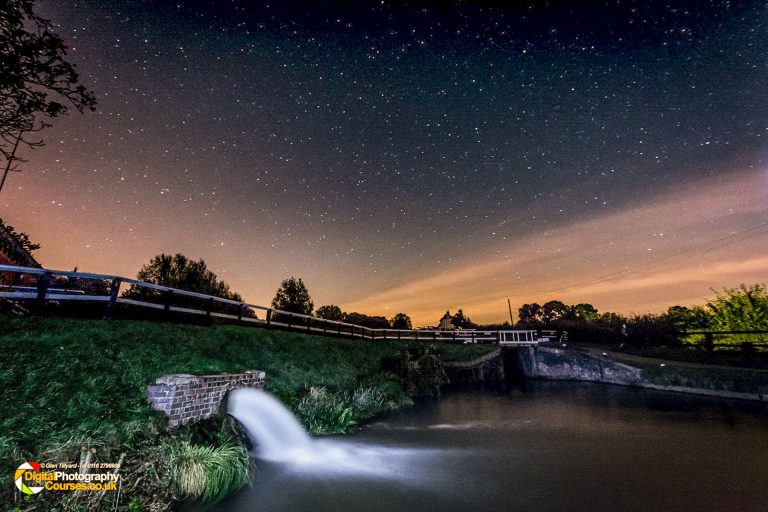

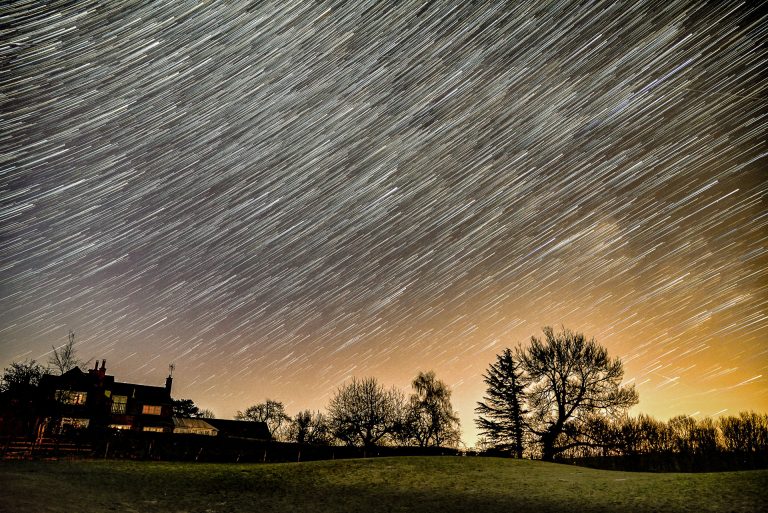

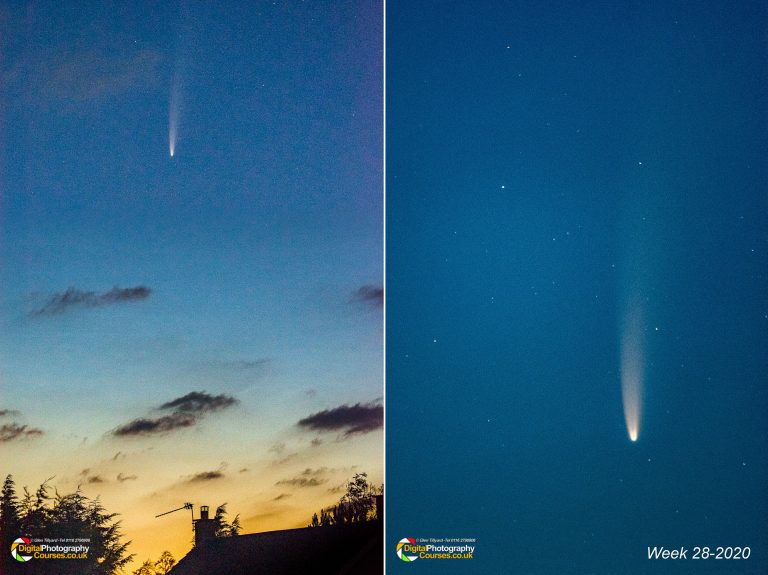


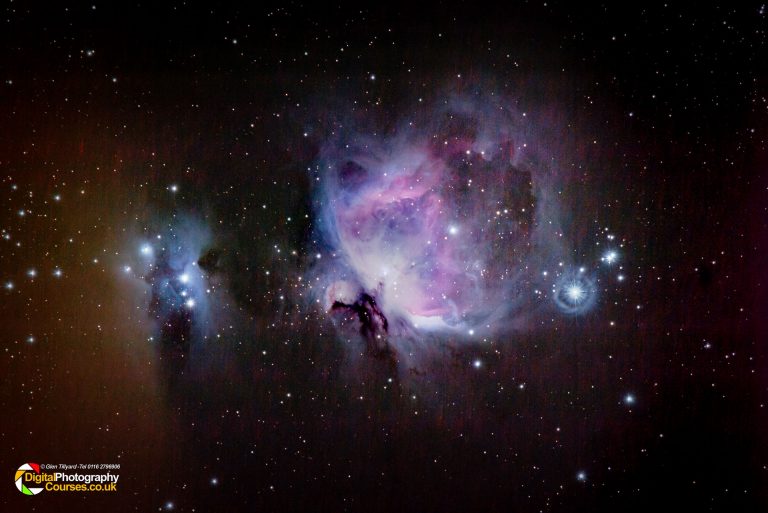


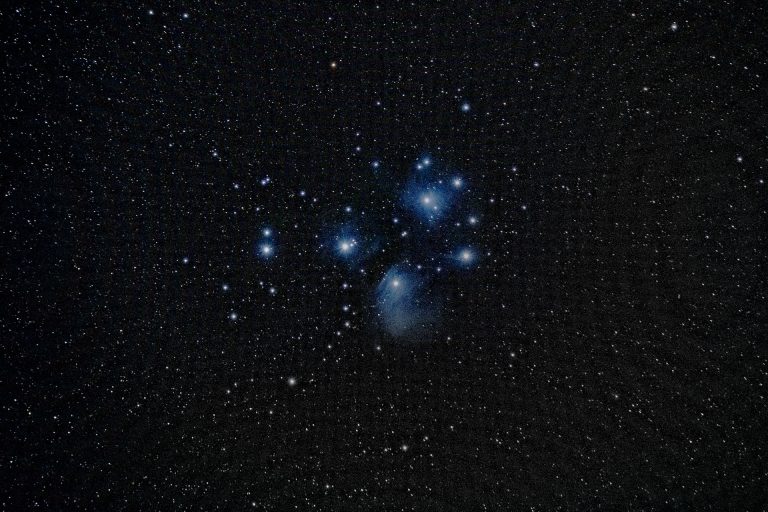

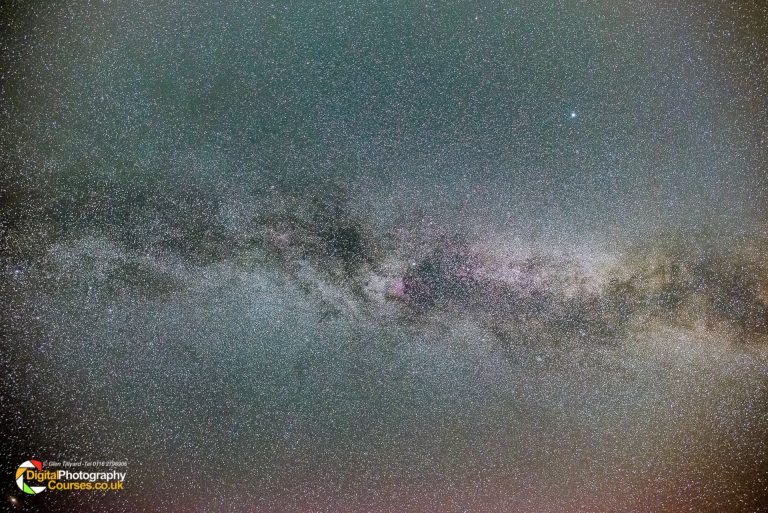



Milky Way Photography Course
I do have spare laptops and tripods and I will include software links in the confirmation email.
The course will start at about 3 or 4 pm and finish no later than 11 pm.
Using my test files I will teach you how to edit your images during the daylight hours so that we can finish at a reasonable time after the shoot.
If the weather is wet then we’ll still go through the set-up procedure indoors as a dry run exactly the same as we would outdoors. In this case, we may finish sooner and go to plan B below.
If we can not photograph the Milky Way, due to clouds, then everyone also gets a free follow up Zoom session so that you can try the techniques at home and I can check your results and offer feedback.
Beginners Astrophotography Course
This course is a follow on for people that have already attended the Night Photography Course.
In this course, we concentrate on how to take photographs of the Milky Way and Star Trails.
The course starts at 4 pm and goes through until about 11 pm and hopefully we will have clear skies. The Milky Way is not always visible so I needed to choose a date when the Milky Way is visible at a sensible time. If you shoot the Milky Way in the winter you need to get go out in the middle of the night.
Obviously, I cannot guarantee clear skies but we will do a dry run outside, if dry, and in the conservatory if we really have to. I will also provide some test files for you to edit. If it is cloudy we’ll finish a bit earlier and each person will get a free Zoom session to review their images.
If you enjoy this course and would like to progress, then I will be running a more advanced course in the spring looking at photographing deep-sky objects like Orion and the Seven Sisters. For this, I recommend a star tracker but I’ll explain all this on the first course.
Astrophotography without a Star Tracker
You probably will not need any extra kit for this course provided you already own – a solid tripod, a cable release and a camera with wide angle lens. The kit lens or one of my recommended Tamron zooms will be fine.
If you have a PC then free software is available with Mac versions being available for about £25.
To reduce noise, and increase detail, you can either increase the amount of light hitting the sensor or take more images and stack these together to improve the signal to noise ratio. Increasing the amount of time that the shutter is open will let in more light – this is good – but also result in star trails – this is bad.
The FX 500 rule is a method to work out how long you can expose the stars without getting star trails. If you have a full frame (FX) camera simply divide 500 by your lens length. For example with a 50mm lens divided into 500 this would be 10 seconds. That is the longest time that you can keep the shutter open without the stars becoming misshapen.
On a DX camera, which most amateurs would own, this is the 300 Rule.
One way around this is to take many short exposures and blend these together to increase the amount of information in the image. Problem is that the sky appears to be moving so these separate images need to be aligned and combined. This is why we need specialist software to combine these images.
This course will take you through how to work out the best camera settings, how many images to take and how to process them.
Ideally you will have Adobe Lightroom and Photoshop to enhance your results further.

This is a light painted image of six exposures blended together. I was so luck to also catch a meteor streaking by.
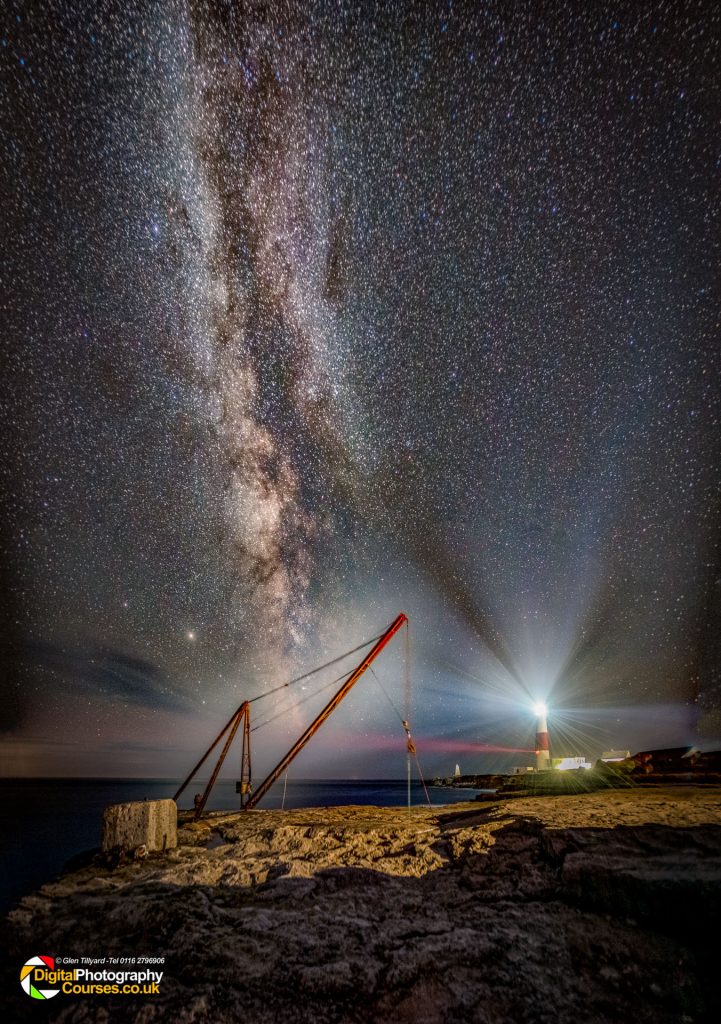
This is a light painted foreground and a vertical panorama with a toal of 3 minute exposure of the Milky Way.
Advanced Astrophotography Course using the Move Shoot Move Star Tracker
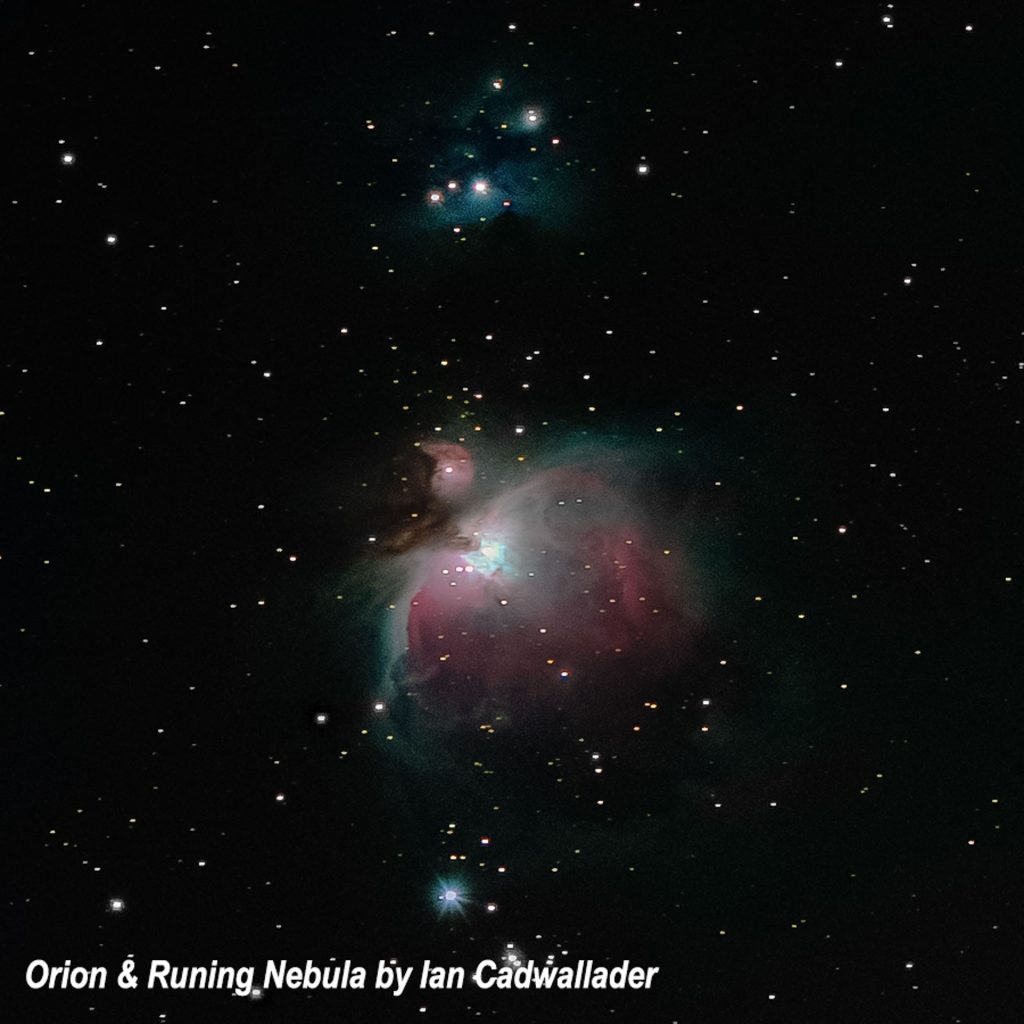
A Star Tracker is a device that rotates the camera in the opposite direction to the earth’s rotation. This means that, from the camera’s viewpoint, the stars appear to stay in the same place in the sky. This means we can now shoot for much longer that the 500 Rule.
The Move Shoot Move Rotator
A low cost and lightweight star tracker is the MSM Rotator for about £160. This small box fits between your tripod and camera and rotates the lens in line with the North Celestial Pole. This allows for increased exposure times in the region of 10x those you could achieve using the FX 500 rule alone. For example – the 500 rule with a 50mm lens would give a maximum exposure time of 10 seconds (500/50=10). With a good polar alignment, a solid tripod and good conditions you should be able to achieve up to 100 seconds.
Longer Exposures = More Light and Detail
This longer exposure obviously lets in a lot more light so this means you can use a much lower ISO like 400 or 800 rather than 6400 ISO. This results in less noise and more detail plus you can use slightly long lenses and start to photograph Deep Sky Objects (DSOs) like the Orion Nebula.
Other than the tracker you probably will not need any extra kit for this course provided you already own – a solid tripod, a cable release and a camera with wide angle lens. The kit lens or one of my recommended Tamron zooms will be fine.
If you have a PC then free software is available with Mac versions being available for about £25.
To increase quality even more we can still shoot many exposures and blend these together to increase the amount of information in the image. This course will take you through how to work out the best camera settings, how many images to take and how to process them.
Ideally you will have Adobe Lightroom and Photoshop to enhance your results further.
Deep Sky Astrophotography (DSOs)
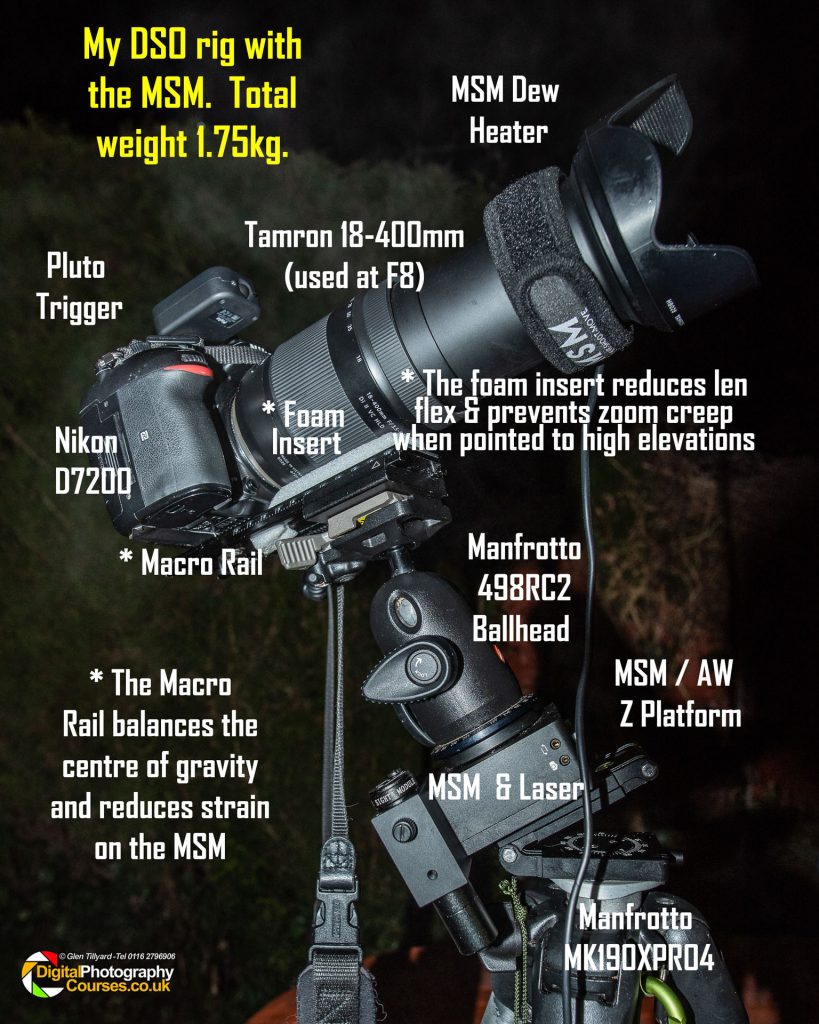
The MSM set up for Deep Sky Astrophography.
While the MSM is primarily intended for use with wide angle lenses and short lightweight telephotos it is very capable of shooting Deep Sky Objects like the Orion Nebula in Orion’s Belt.
Please note: These links are affiliate links so I will get a small commission but it will not cot you any more and it helps me to produce more content
Move Shoot Move Rotator
https://www.moveshootmove.com/collections/sifo-rotator/products/sifo-rotator-for-star-tracking-time-lapse-panorama-photography?aff=64
Move Shoot Move Wedge –
https://www.moveshootmove.com/collections/sifo-rotator/products/new-wedge?aff=64
Move Shoot Move Z Platform
https://www.moveshootmove.com/collections/sifo-rotator/products/z-v-platform-designed-with-alyn-wallace-preorder?aff=64
This beautiful glowing nebula and the surrounding stars are easily captured using anything from a 50mm lens upwards. Longer lenses will obviously get closer but something like a 100-135mm will show excellent detail as seen in these images by Ian Cadwallader, Jim Tyson and Michael Statham.
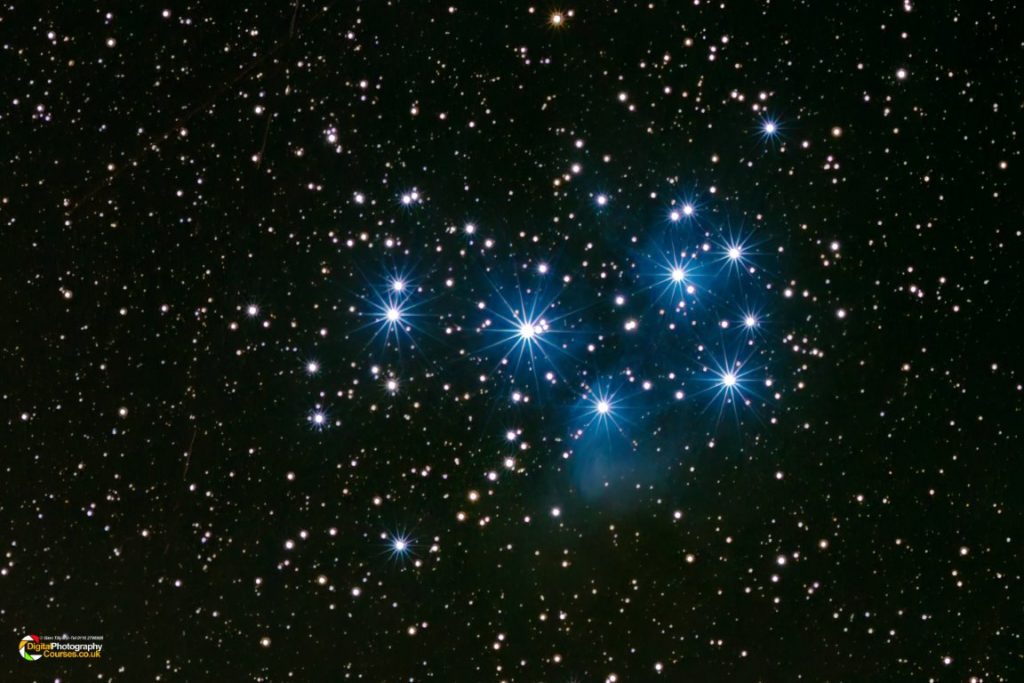
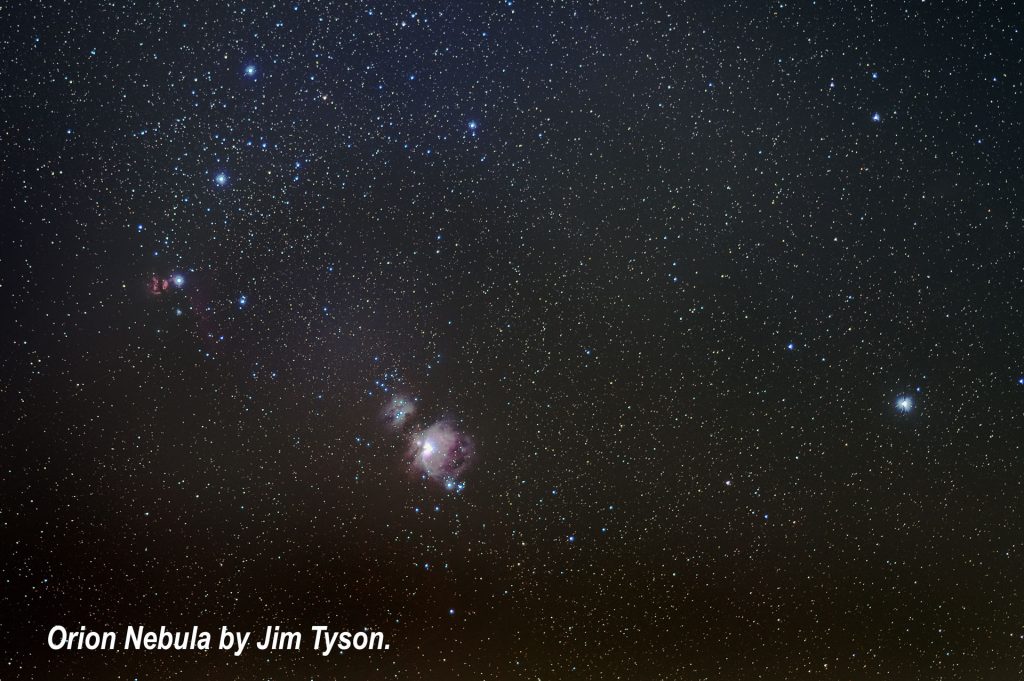
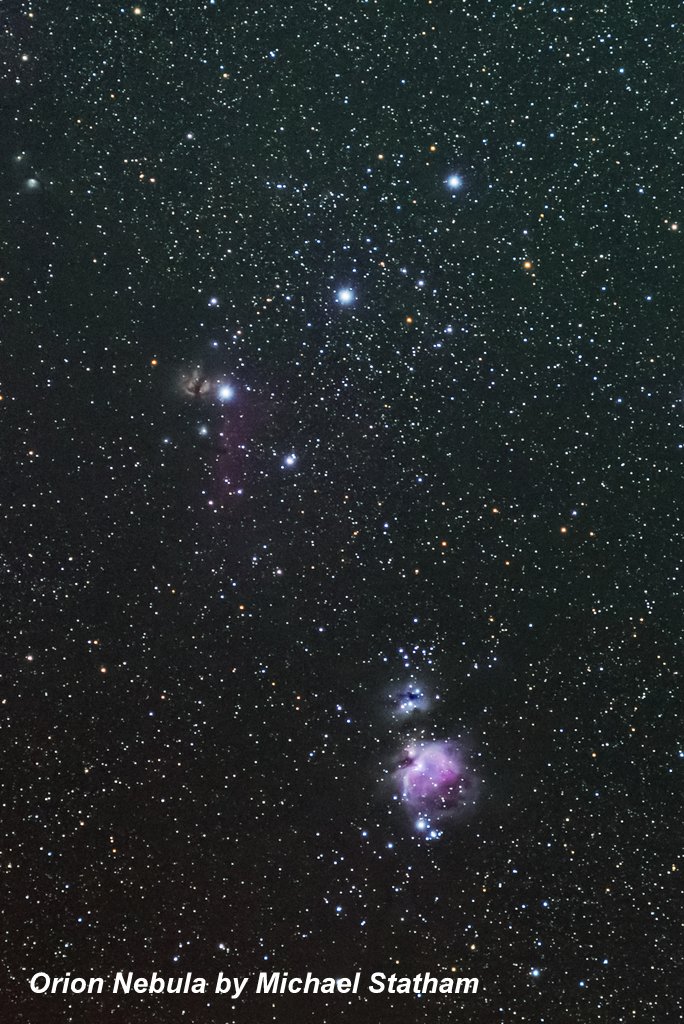
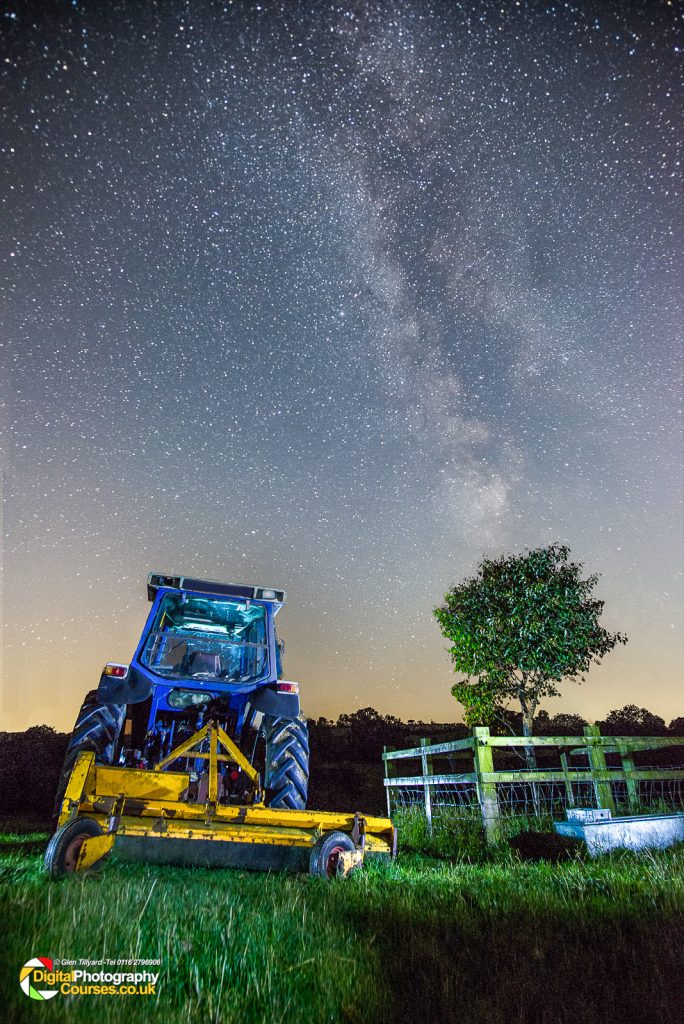
This day has made me so much more aware of the points I need to think about when taking pictures. The theory was well explained with a good combination of techniques , examples and trouble shooting tips. The course maintained a good pace with just the right amount of information and practical exercises. Carol B
Previous providers of these courses have spent far too much time on unnecessary camera settings and constant adjustments. This course is so much more practical and I learnt a huge amount. I would highly recommend anyone interested in photography to get on one of these courses and you will surprise yourself how quickly your photographs improve. A great tutor who delivered the course content in an easy to understand and relaxed manner. Ian Cadwallader
